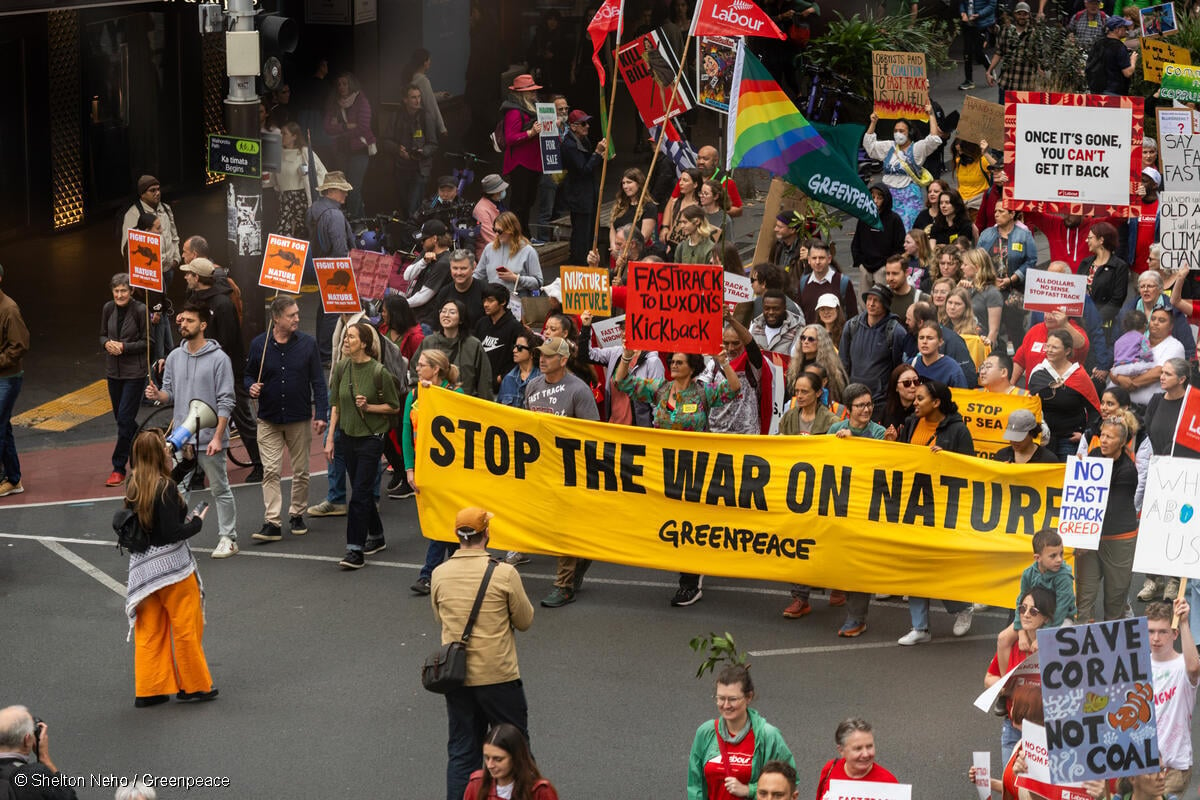A new Greenpeace International report released today called Turning Down the Heat reveals that methane emissions of 29 meat and dairy companies rival those of the world’s 100 largest methane emitters from the fossil fuel sector.

This morning,Greenpeace activists scaled Fonterra’s 15-storey Te Rapa milk processing factory, where they unfurled a 160 square metre banner reading ‘Fonterra’s methane cooks the climate’ and let off clouds of pink smoke to symbolise methane emissions. They have now been removed by police.
Greenpeace Aotearoa spokesperson Sinead Deighton-O’Flynn says “As the climate crisis worsens, things can start feeling really grim, but this new report shows that there are real and achievable solutions to pull the climate emergency brake – and that New Zealand has a major role to play in that.”
The report, “Turning down the heat: Pulling the Climate Emergency Brake on Big Meat and Dairy” outlines that systematic changes in the production and consumption of meat and dairy to reduce methane emissions in the global north could provide a significant cooling effect by 2050, with some positive results already seen by 2030.
It shows that it is possible to meaningfully slow down climate heating within our lifetime by significantly reducing industrial meat and dairy production, and increasing plant-based food, in line with the EAT-Lancet Planetary Health diet.
Greenpeace Nordic senior agriculture campaigner Shefali Sharma says, ““These are incredibly hopeful findings. For so long, we have tiptoed around big meat and dairy companies and their unfettered growth as if they are somehow exempt from making the drastic changes required of everyone else on this planet.
“It’s always either the farmer or the consumer who has to change, while these companies decide what farmers grow, what they are paid and what we eat. We have shown that the pathway is clear.”
Greenpeace Aotearoa agriculture campaigner Sinéad Deighton-O’Flynn says, “This morning’s action put Fonterra in the spotlight ast New Zealand’s worst climate polluter. They are cooking the climate with methane gas produced by their oversized dairy herd, and for decades they have avoided any accountability for their climate pollution.
“Fonterra and the Meat and Dairy industry have repeatedly been exposed for greenwash and false claims regarding their climate commitments, and the new report by Greenpeace highlights this.”
Globally, livestock is the single biggest driver of methane emissions. Methane, a superheating greenhouse gas, is much more potent than gases like carbon dioxide, but is relatively short lived. The report shows that rapidly cutting methane emissions by 45% by 2030 would have an immediate impact in slowing down temperature rise, averting nearly 0.3°C of global warming by 2045.
“We know many New Zealanders are concerned about climate change, but what this report does show is that there is in fact a reason for hope. If we can cut methane emissions from the meat and dairy industries, and keep them down, we can avoid the worst impacts of the climate crisis,” says Deighton-O’Flynn.
“Fonterra, as New Zealand’s worst climate polluter, has a key role to play in this. They could stand on the right side of history, end their use of rainforest-destroying palm kernel, phase out synthetic nitrogen fertiliser, and decrease the number of cows on farms.
“Greenpeace isn’t the only one demanding this – global consumers of meat and dairy are calling for meaningful climate action, including Fonterra’s corporate customers. If Fonterra don’t take action to cut their climate pollution, they will be left behind.”



